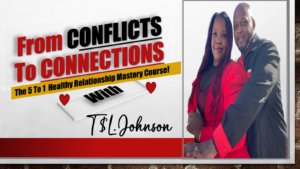Understanding the Resistance
Recognizing the Signs
When you’re in a conversation, especially when emotions run high, it’s crucial to pick up on the subtle signs of resistance. People often communicate their discomfort non-verbally; fidgeting, avoiding eye contact, or even crossing their arms can all be indicators. From my experience, these signs are often overlooked, but they’re vital in determining whether we should lean in or ease off.
Listening is key here. When I sense someone pulling away, I actively try to engage them without pushing too hard. It’s like reading the room—if you can get a handle on the vibe, you can adjust your approach accordingly. I’ve found that even a slight shift in my tone or body language can make all the difference.
By acknowledging these signs, I’ve learned to adapt my response. Instead of simply pressing on with my point, I take a moment to pause and assess. This little adjustment has helped me connect with others on a much deeper level and encourages a more open dialogue.
Creating Safe Spaces
The Importance of Trust
One of the most important things I’ve realized in my interactions is the immense power of trust. People are much more likely to open up if they feel secure. In my experience, establishing this trust often starts with vulnerability. I let them know it’s okay to feel what they feel—we’ve all been there right?
It’s also crucial to give people space to express their feelings without judgment. I make it a point to show that I’m listening and genuinely care about their perspective. This approach not only eases their anxiety but also encourages more honest communication.
Over the years, I’ve found that creating a safe space involves more than just words; it’s about actions. Following through with what I say builds credibility, and that really strengthens the bond between us. Trust takes time, but it is so worth it!
Using Empathy as a Tool
Understanding Their Perspective
Empathy is like a superpower in personal interactions. When someone wants to lean away, I make it a priority to really understand their perspective. Instead of jumping straight into problem-solving mode, I take a step back and try to see things from their point of view. It’s all about validating their feelings!
For instance, I often ask open-ended questions to delve deeper into what they’re experiencing. It’s amazing how this approach can transform the conversation from a defensive stance to a more collaborative one. I’ve noticed that just by expressing genuine interest in their feelings, I help them feel heard and understood.
Incorporating empathy into my conversations has not only enriched my relationships but has often led to breakthroughs. People are usually more receptive to leaning in when they see you’re trying to walk a mile in their shoes. It’s not always easy, but it’s incredibly rewarding!
Practicing Active Listening
Focusing on the Speaker
Honestly, the art of active listening has changed the game for me. I used to be the person who waited for my turn to talk, but I realized that this often leaves the other person feeling unheard. So now, I focus completely on the speaker—this means putting away distractions and making direct eye contact. I want them to know they’re the center of my attention.

I’ve adopted techniques like summarizing what they’ve just said to show I’m really engaged. This not only helps clarify their points but also deepens the conversation. I might say something like, “So what I’m hearing is…” which encourages them to elaborate if they want to.
Through my efforts in active listening, I’ve discovered that people feel much more comfortable sharing their thoughts. When we’re not just waiting to respond, but genuinely digesting their words, it fosters an environment of respect and understanding. They feel valued—and that’s worth its weight in gold.
Knowing When to Continue or Back Off
Reading the Room
There’s a fine line between leaning in and overwhelming someone who’s leaning away. In my journey, I’ve had to learn to read the room effectively. Sometimes, despite your best efforts, they might need space to process. Being able to recognize when it’s time to step back is a crucial skill I’ve developed over time.
When I sense that someone is feeling more uncomfortable, I pause. I often say something like, “I can tell this is a lot right now; we can talk about it later if you’d prefer.” Giving them an option can really shift the dynamic and reinforces their sense of control.
This balance has been essential for me because it shows that I respect their boundaries. It’s important to know that sometimes, just being there is enough. In the moments when we both recognize that continuing a conversation might be too much, it actually strengthens our connection for the future.
Frequently Asked Questions
1. What does it mean to lean in during conversations?
Leaning in refers to actively engaging with someone who may be hesitant or resistant. It’s about being present and encouraging open dialogue, even when the other person may be uncomfortable.
2. How can I tell if someone wants to lean away?
Look for signs like crossed arms, lack of eye contact, or vague responses. These can indicate discomfort or a desire to disengage from the conversation.
3. Why is creating a safe space important in conversations?
Creating a safe space fosters trust and encourages open communication. When people feel secure, they are more likely to express their feelings honestly and engage in meaningful discussions.
4. What are some effective ways to practice active listening?
Active listening involves giving your full attention, summarizing what the other person has said, and asking open-ended questions. This shows that you value their thoughts and are committed to understanding their perspective.
5. How do I know when to step back during a conversation?
Trust your instincts! If you notice signs of discomfort or resistance, it may be wise to pause the conversation. Offering to revisit the topic later can help maintain the relationship while respecting their boundaries.

Schedule Your First 20-Minute Coaching
Call With Us Today to see if we fit . You pick the price!
Click Here




